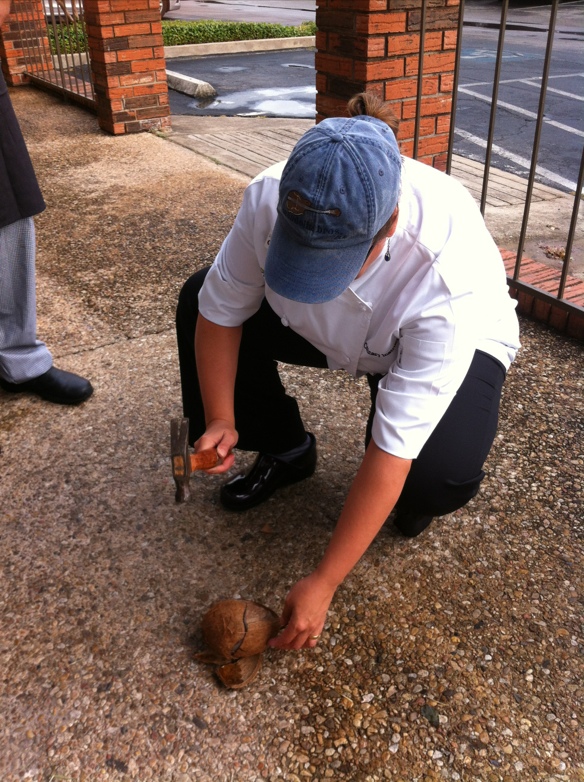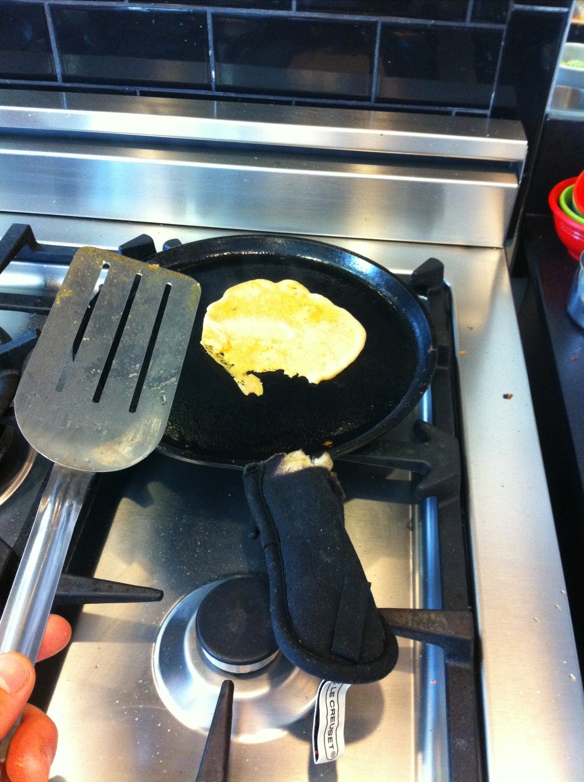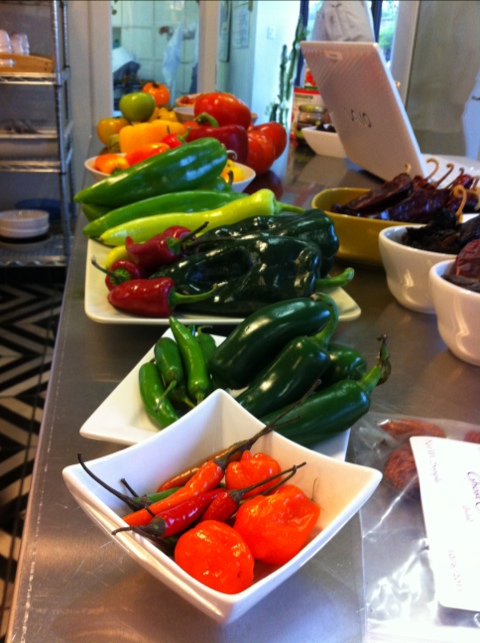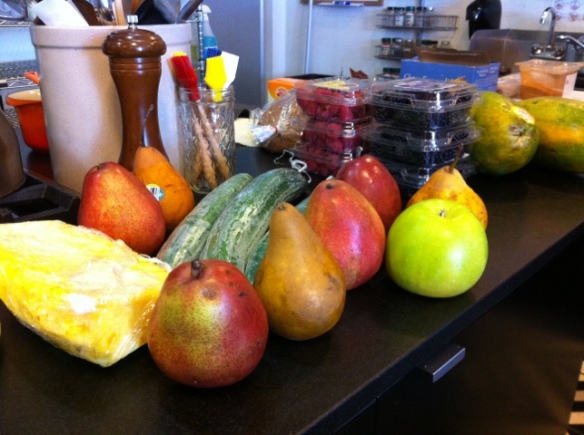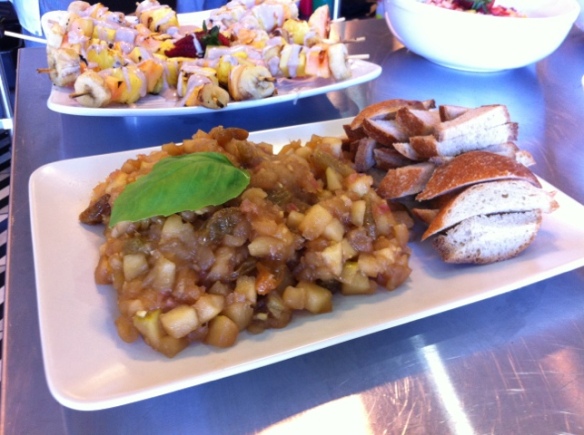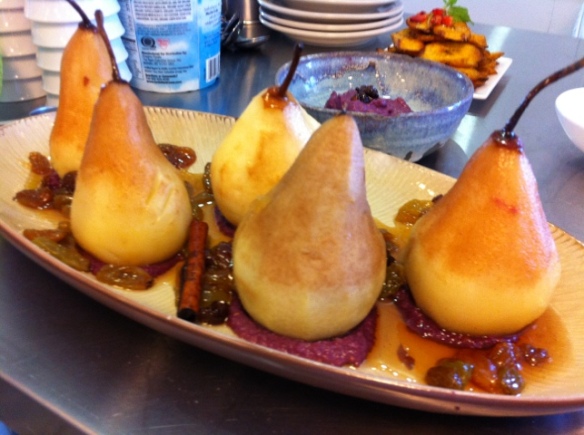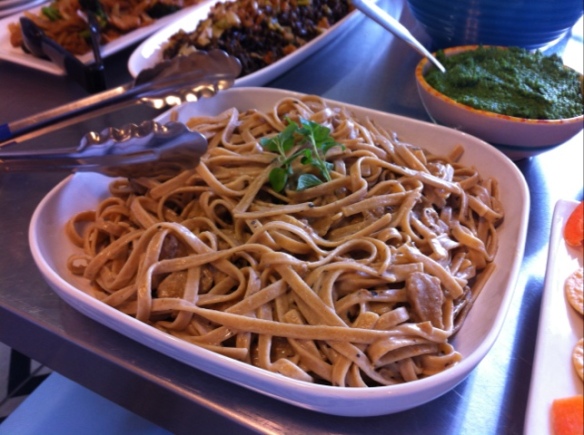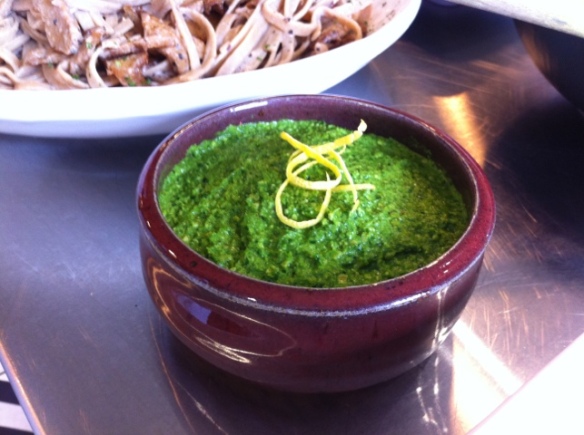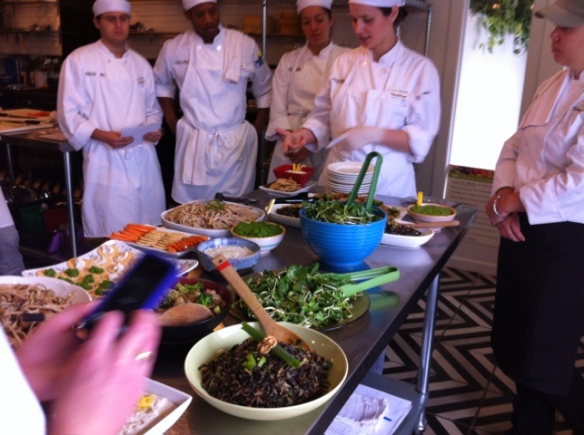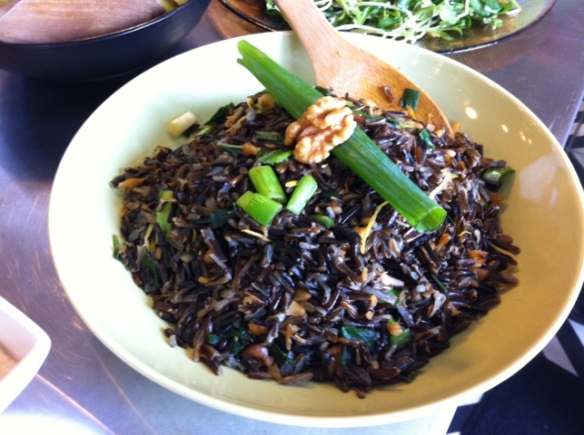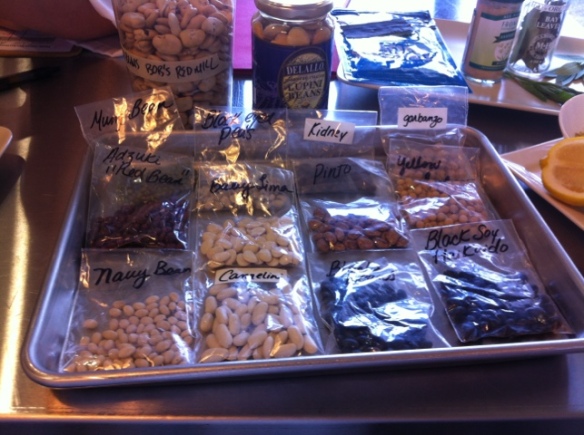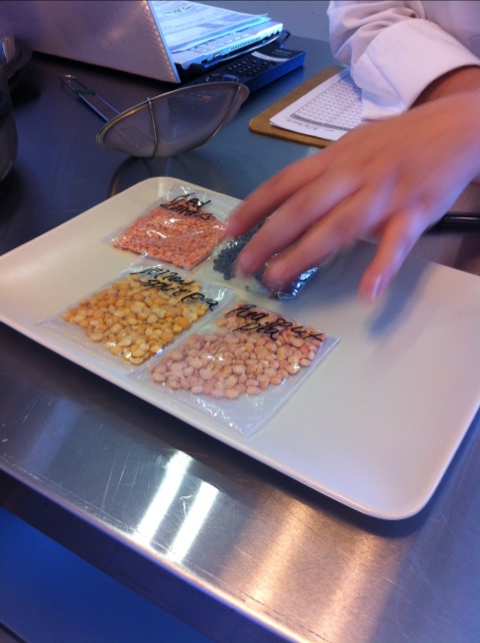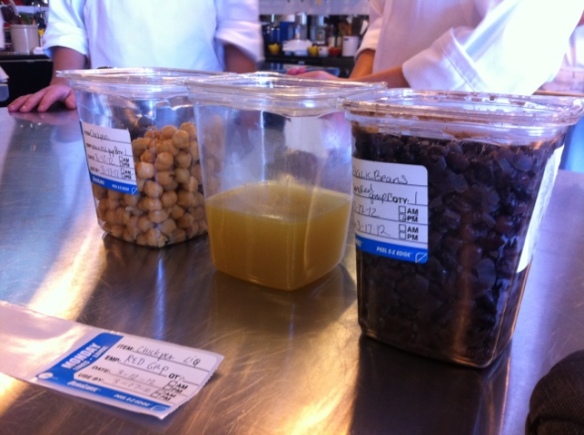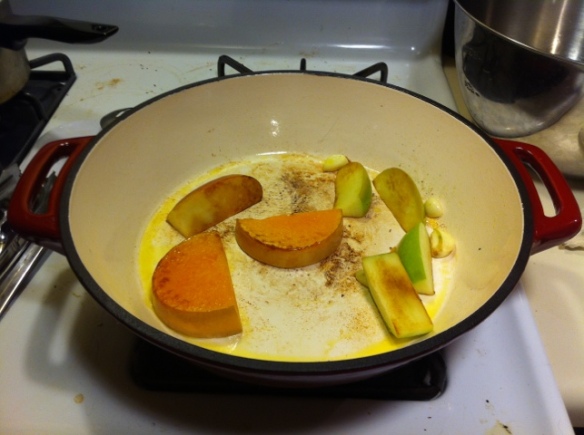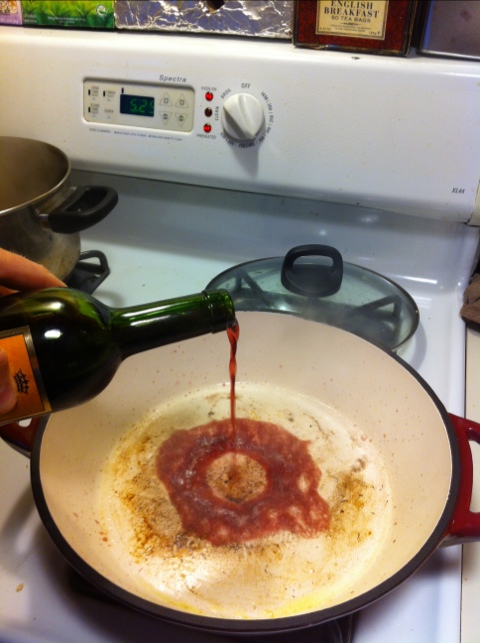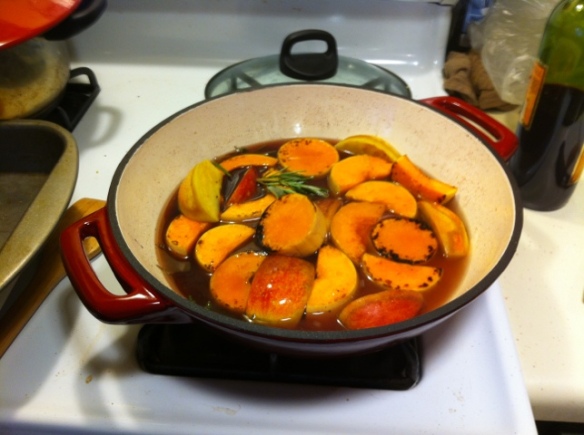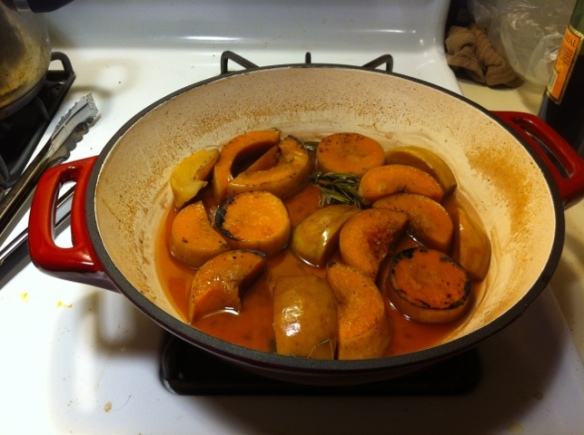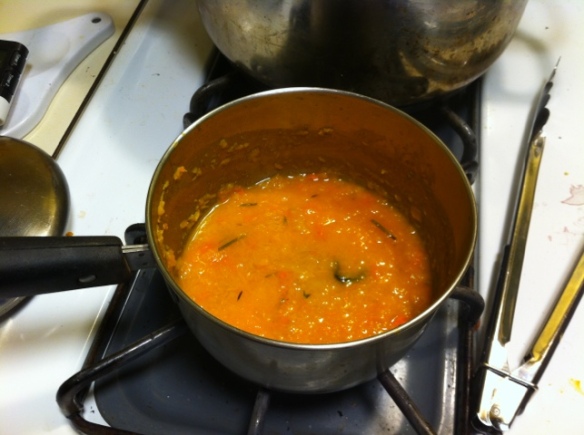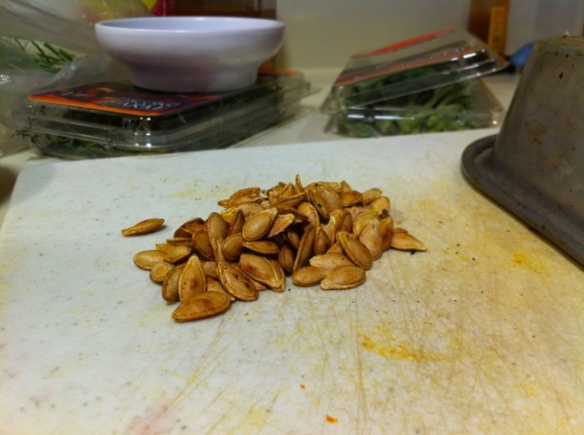The topics for Monday were grains, herbs, and spices.
Demo Kitchen
Chef Rachel Zierzow presented to my group Monday morning on herbs and spices. She definitely whet my appetite for getting a spice grinder after she toasted spices for garam masala and ground them in a Krups spice/coffee grinder. The result was a much more aromatic powder than my garam masala at home.
Below: Chef Rachel gets all herby on us.
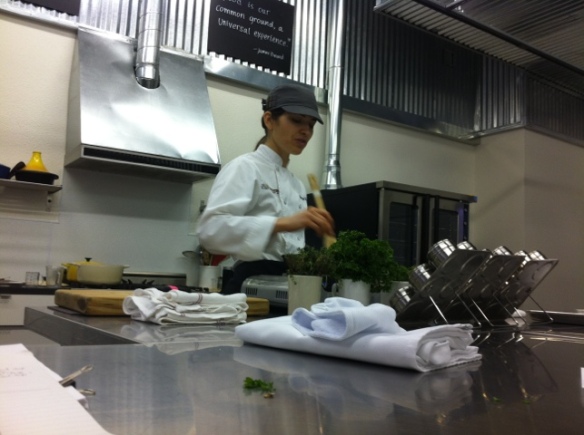
Below: We got a pop “quiz” on herbs and spices. It was fun to see if I could identify all of them by sight and smell alone.
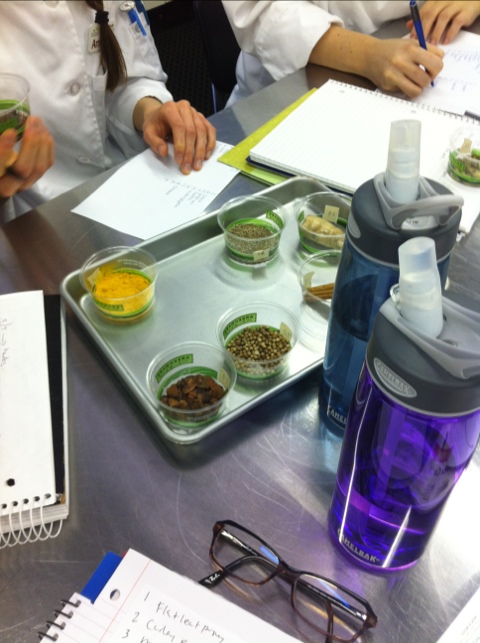
Below: A carrot soup with Garam Masala prepared by Chef Rachel in the demonstration kitchen. It was subtly sweet with warming spices of the garam masala and blended smooth in a Vita Mix.

Lab Kitchen
In lab kitchen, we made rice pilaf, brown rice, white rice, and risotto. Rice, you ask? Isn’t that super simple and boring? No way! Rice is very versatile. You can add all kinds of stuff to it and pair it with all kinds of foods and flavors. There are many types of rice with different flavor profiles – jasmine, basmati, wild rice, and many others hold aromas and flavors that go far beyond your grandma’s white rice. I even cooked some black Forbidden rice recently.
Here’s another great thing about rice, and especially brown rice – it’s minimally processed. Your body has to work a bit harder to break it down. You also can’t eat as much of rice as you can eat of bread, for example, before you realize you are full. Do yourself a favor – cut the amount of bread you eat by half and use rice as your main carb.
Below: Varieties of rice we reviewed in lab kitchen.
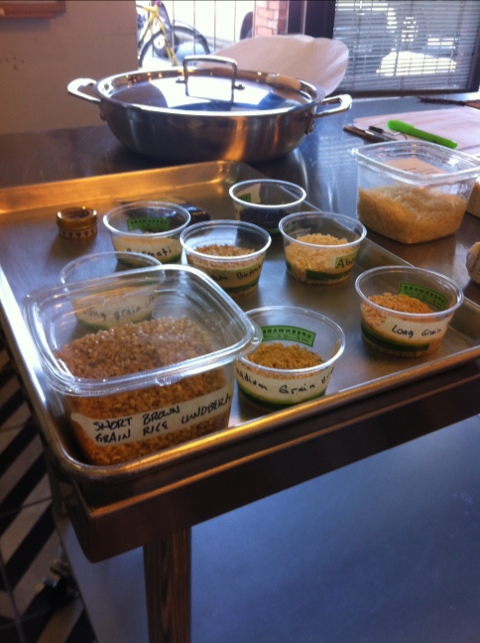
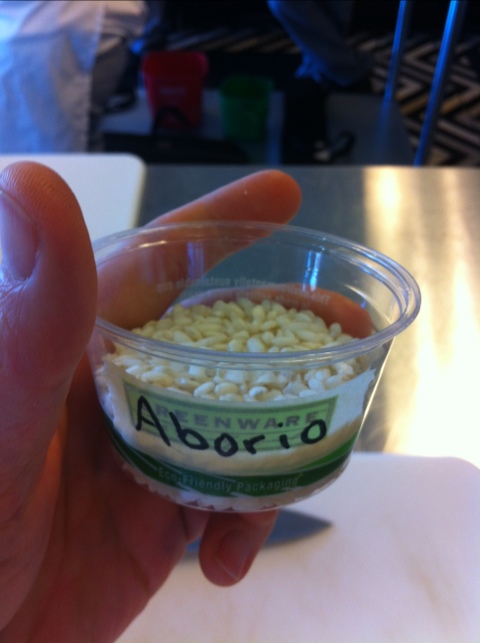
Below: Chef Alex shows us how to rinse rice before cooking to wash off the starchy bits.
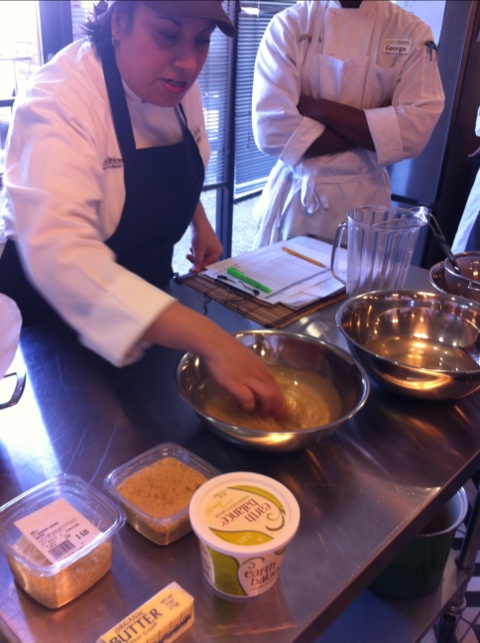
Below: Some risotto that Chef Alex cooked. She wanted to offer us the chance to eat a traditional risotto with butter and parmesan cheese. When I made the risotto, I made it with Earth Balance and nutritional yeast, since I don’t eat dairy for allergy reasons.

Below: Some wild rice cooked by a student group during lab.
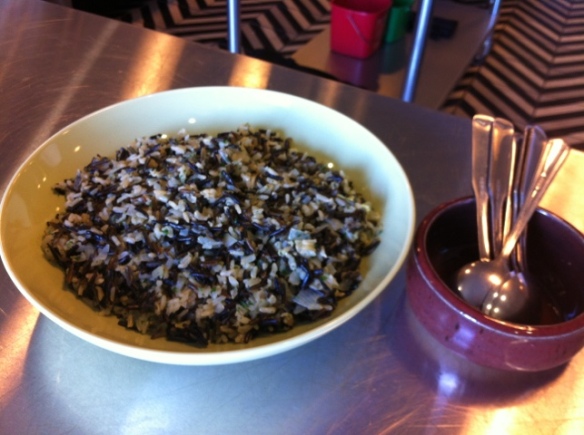
Below: Rice cooling on sheet pans. It’s important to cool hot food quickly when you’re going to store it in a cold state.
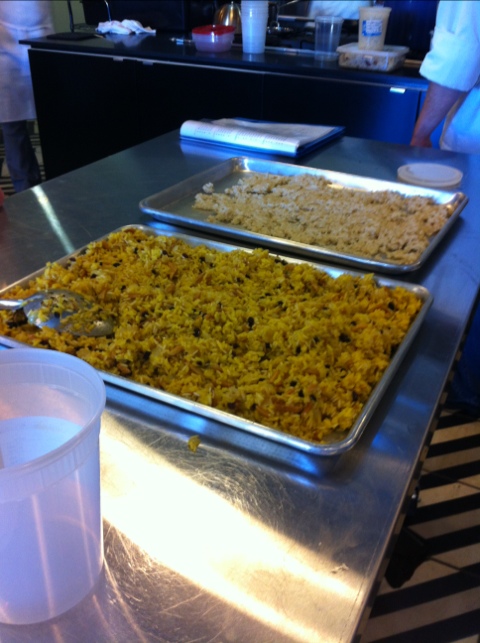
I wanted to practice a bit at home, so I pulled out a recipe for Indian Pulau from my “recipes to try” folder, which is way too thick these days. Pulau is a rice dish made from basmati rice and featuring garam masala. There are many variations on pulau. I got my recipe from the 1998 Best of Gourmet, which featured many Indian recipes in the special focus section. Thanks, Austin Public Library!
Since I don’t have a spice grinder – yet – I had to use a jar of garam masala rather than make my own.
Below: My mise en place for pulau.


Below: The recipe called for sauteing the spices, then adding the rice to the spices and oil. Only then would you add the water.

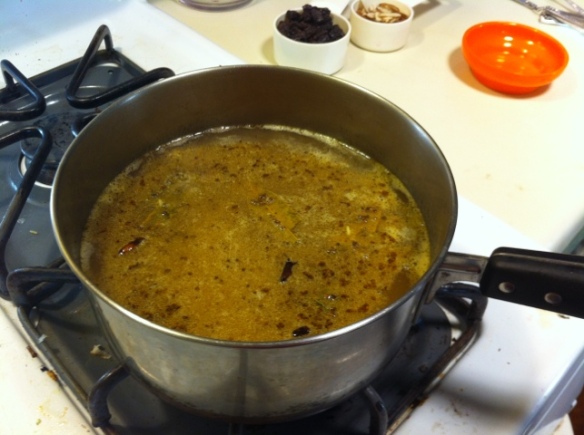
Below: I tossed in the cold, dry raisins and let the rice sit for five minutes. After that, the raisins were plumped up a bit, and were moist and warm. Good stuff!
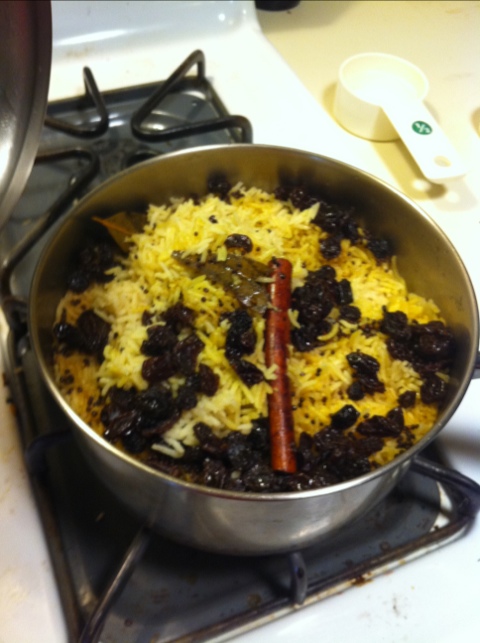
Below: The finished product. Aromatic, mysterious, colorful, with textural and color variations. This is not the white rice I grew up with!






